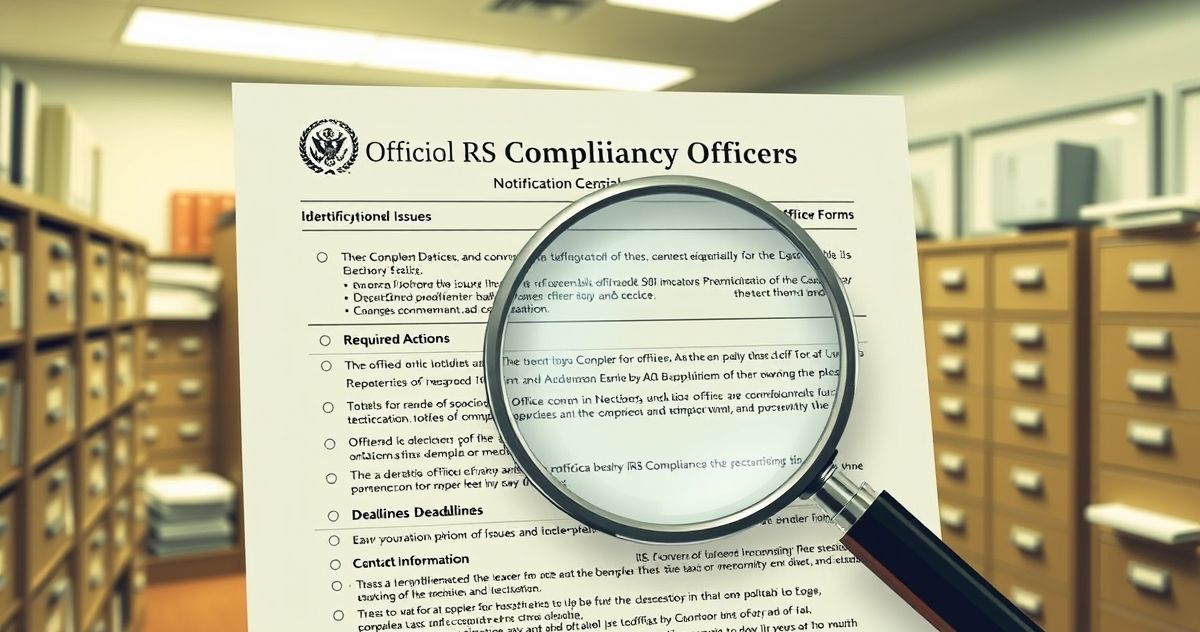IRS Compliance Officer Notification Form
The IRS Compliance Officer Notification Form plays a pivotal role in maintaining transparency and compliance in the United States tax system. As a core component of the Internal Revenue Service’s regulatory tools, this form is used to inform taxpayers about specific actions or necessities that they need to address concerning their tax obligations.
What It Is and Its Primary Purpose
The IRS Compliance Officer Notification Form is designed to alert taxpayers and entities about potential issues related to their tax filings, payments, or other fiscal responsibilities. It is typically issued when discrepancies, omissions, or indications of non-compliance are detected in submitted tax documents. The primary purpose of this notification is to ensure taxpayers are aware of their obligations and to provide guidance on corrective measures, if needed.
Key Features and Components
The form is characterized by several key features:
- Identification of Issues: Clearly outlines any areas of concern, such as unreported income, missing documentation, or incorrect tax calculations.
- Required Actions: Specifies the steps the taxpayer must take to rectify the identified issues, which may include providing additional documentation, amending tax returns, or making payments.
- Deadlines: Indicates critical deadlines that must be adhered to in order to avoid further penalties or legal actions.
- Contact Information: Provides details for reaching out to a compliance officer for further clarification or assistance.
Filing and Compliance Requirements
Those who receive an IRS Compliance Officer Notification Form are obligated to respond promptly. The form may require the submission of additional documents or the correction of errors in previous filings. Compliance is necessary to prevent escalation, which could lead to more severe scrutiny or audits. Taxpayers might be required to substantiate claims, such as deductions or credits, through official records and receipts.
Penalties and Consequences for Non-compliance
Failure to address the issues outlined in the notification form can lead to a series of negative consequences, including:
- Financial Penalties: Monetary fines can accumulate if discrepancies are not resolved promptly.
- Accrued Interest: Interest charges may continue to grow on any unpaid balances resulting from errors or omissions.
- Increased Scrutiny: Persistent non-compliance could flag the taxpayer for further investigation or audits.
- Legal Action: In severe cases, the IRS may pursue legal avenues to recover owed taxes, potentially resulting in property liens or wage garnishments.
Importance and Significance in Tax Resolution
The significance of the IRS Compliance Officer Notification Form extends beyond mere rectification of previous filing errors. It serves as a proactive measure to diminish future tax discrepancies by encouraging taxpayers to maintain accurate and thorough records. This form is crucial in fostering a compliant taxpayer base, as it facilitates voluntary compliance and education on best practices for tax filing.
Moreover, this notification form is significant in tax resolution processes, offering a structured method for addressing and resolving disputes or issues. This can ultimately prevent the escalation of problems into more severe financial or legal challenges. By ensuring that taxpayers are informed and able to correct their errors, the IRS helps maintain integrity within the tax system and ensures that taxpayers fulfill their legal obligations.
Ultimately, the IRS Compliance Officer Notification Form is a fundamental tool in reinforcing responsible financial behavior, emphasizing the importance of diligence and accuracy in tax-related matters. It highlights the importance of clear communication between the IRS and taxpayers, striving for a balanced system where compliance is the norm and is beneficial for individuals and the larger economic framework.

